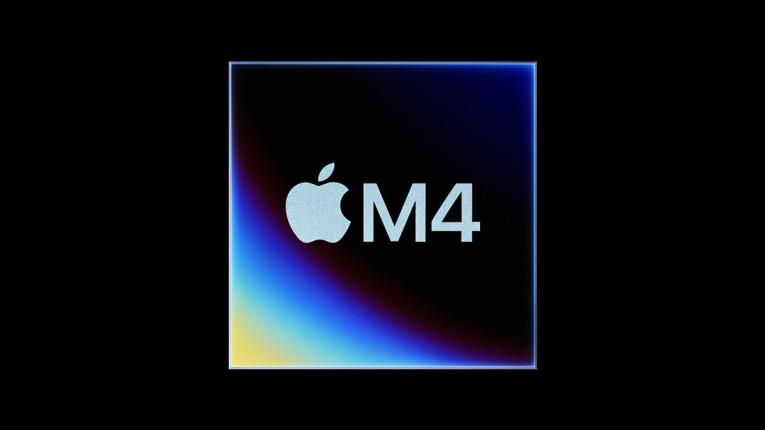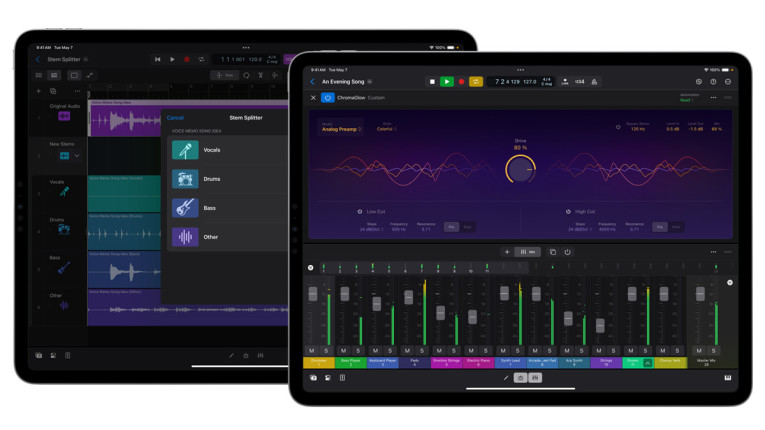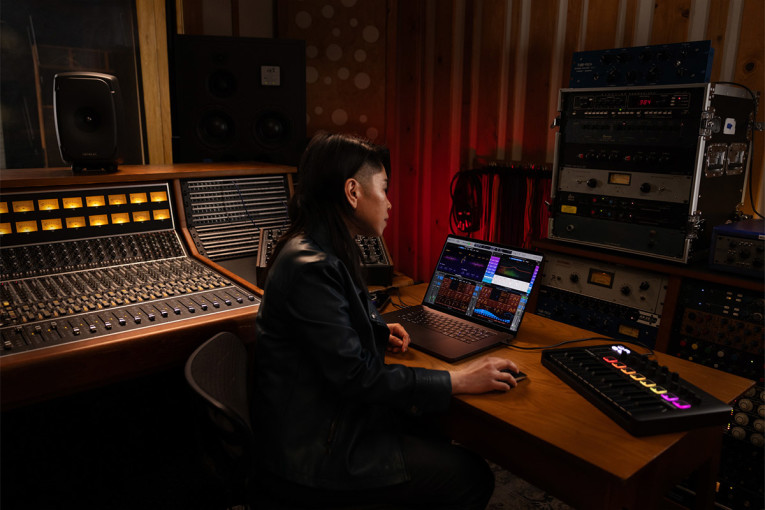
On the hardware front, there’s a lot to take up, with Apple surprising the industry with an anticipated unveiling of its latest M4 chip, delivering phenomenal performance to the all-new iPad Pro. Built using second-generation 3-nanometer technology, the M4 is a system on a chip (SoC) that advances even more the industry-leading power efficiency of Apple silicon, short after the first M3-based MacBook Pro and MacBook Air have been launched.
The new M4 CPU has up to 10 cores, while the new 10-core GPU builds on the next-generation GPU architecture introduced in M3, and brings Dynamic Caching, hardware-accelerated ray tracing, and hardware-accelerated mesh shading to iPad for the first time. M4 has Apple’s fastest Neural Engine ever, capable of up to 38 trillion operations per second, which is faster than the neural processing unit of any AI PC today. Combined with faster memory bandwidth, along with next-generation machine learning (ML) accelerators in the CPU, and a high-performance GPU, M4 makes the new iPad Pro an outrageously powerful device for artificial intelligence.
The incredibly thin design of the latest iPad Pro is also equipped with a new Ultra Retina XDR touchscreen OLED display, which creates a perfect platform for all types of creative applications, including to power Apple’s own professional software Logic Pro and Final Cut Pro. It’s certainly telling that Apple opted to introduce the latest generations of Apple silicon M3 and M4, in its more affordable, entry-level platforms such as the MacBook Air and iPad, while it’s professional-oriented machines Mac Studio, and Mac Pro have yet to benefit from the additional power of the M3 (both now likely to jump directly to M4-based chips in the next refresh).

What this all means though, is that Apple is accelerating so much the level of advancement of its silicon that even the most demanding media production applications are now able to work perfectly well in its entry-level platforms, even though the new iPad Pro is everything-but “entry-level”. Thanks to Dynamic Caching, an Apple innovation that allocates local memory dynamically in hardware and in real time to dramatically increase the average utilization of the GPU, this significantly increases performance for the most demanding pro apps and games.
“The new iPad Pro with M4 is a great example of how building best-in-class custom silicon enables breakthrough products,” says Johny Srouji, Apple’s senior vice president of Hardware Technologies. “The power-efficient performance of M4, along with its new display engine, makes the thin design and game-changing display of iPad Pro possible, while fundamental improvements to the CPU, GPU, Neural Engine, and memory system make M4 extremely well suited for the latest applications leveraging AI. Altogether, this new chip makes iPad Pro the most powerful device of its kind.”
“M4 delivers up to 1.5x faster CPU performance over the powerful M2 in the previous iPad Pro. Whether working with complex orchestral music files in Logic Pro or adding highly demanding effects to 4K video in LumaFusion, M4 boosts performance across pro workflows,” the company details.
The new M4 also has a blazing-fast Neural Engine — an IP block in the chip dedicated to the acceleration of AI workloads. Together with next-generation ML accelerators in the CPU, the high-performance GPU, and higher-bandwidth unified memory, the Neural Engine makes M4 an outrageously powerful chip for AI. And with AI features in iPadOS like Live Captions for real-time audio captions, and Visual Look Up, which identifies objects in video and photos, the new iPad Pro allows users to accomplish AI tasks quickly and on device.
The new iPad Pro with M4 can easily isolate a subject from its background throughout a 4K video in Final Cut Pro with just a tap, and can automatically create musical notation in real time in StaffPad by simply listening to someone play the piano. And inference workloads can be done efficiently and privately while minimizing the impact on app memory, app responsiveness, and battery life.

In terms of design, the new iPad Pro in a stunningly thin and light device, taking portability and performance to the next level. Available in 13-inch and 11-inch sizes, both with the new state-of-the-art OLED display, the new iPad Pro is clearly targeted at professional users. Just as an example, thanks to its advanced Media Engine, the iPad Pro is able to deal with the most demanding codecs at the highest quality-levels.
The iPad Pro also includes a high-performance USB-C connector with support for Thunderbolt 3 and USB 4, delivering fast wired connectivity — up to 40Gb/s bidirectionally. It also supports Wi-Fi 6E for super-fast Wi-Fi connections, and there’s an eSIM version in Wi-Fi + Cellular models with 5G.
When used in combination with the just announced new Logic Pro for iPad 2, the full potential of the new iPad Pro is revealed. This update to the popular DAW and music production software introduces new AI-powered “studio assistant” features that augment the music-making process and provide artists help right when they need it — all while ensuring they maintain full creative control. These features include Session Players for automatic accompaniments, expanding on the existing Drummer capabilities in Logic to include a new Bass Player and Keyboard Player; ChromaGlow, to instantly add “warmth” to tracks; and Stem Splitter, for audio source separation from a single audio recording.

Because the new Logic Pro for iPad 2 - and the also announced new Logic Pro for Mac 11 - are both powered by artificial intelligence, the new Stem Splitter feature is able to extract and work with individual parts of a single audio recording - all processed on device. Any mixed audio file can quickly be converted into separate tracks with Drums, Bass, Vocals, and Other instruments, ready to apply effects, adding new parts, or remixing.
Since its introduction in 2023, Logic Pro for iPad has seen rapid adoption from users that recognized the full advantage of touchscreens. And thanks to the portable design of iPad, Logic Pro offers a complete studio experience on the go, complete with multitrack recording and a full-featured professional mixer, no to mention a vast collection of effects and virtual instrument plug-ins. For music producers, Logic Pro for iPad is a dream composition tool, allowing the creative process to flow more naturally.
As another example, the new Final Cut Pro for iPad 2, available later in 2024, introduces Live Multicam, a new feature that transforms iPad into a mobile production studio, allowing users to view and control up to four connected iPhone and iPad devices wirelessly. To support Live Multicam, Final Cut Camera, an all-new capture app, also comes to iPad and iPhone. And Final Cut Pro for iPad 2 is even able to process editing and coloring of complex 8K cinematic projects if that’s something that is required.
Logic Pro for Mac 11 is available as a free update for existing users and for $199.99 (U.S.) for new users, while Logic Pro for iPad 2 is available on the App Store for $4.99 (U.S.) per month or $49 (U.S.) per year. The feature set is the same, just the working environment is different, with the iPad version being able to become a portable extension of the Mac version, designed to live in the studio, while the iPad free to go anywhere.
www.apple.com








